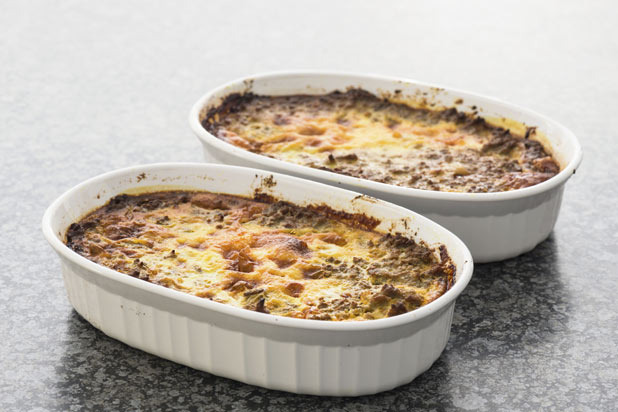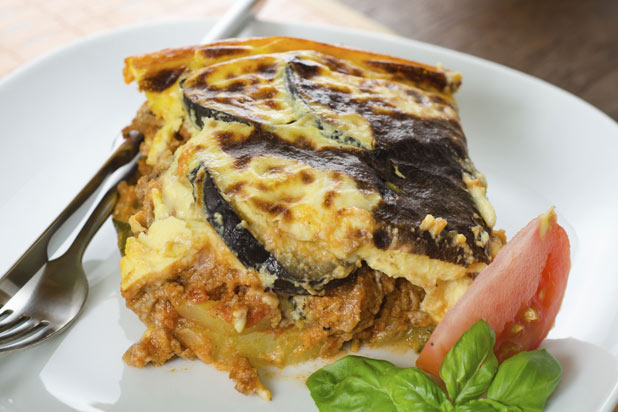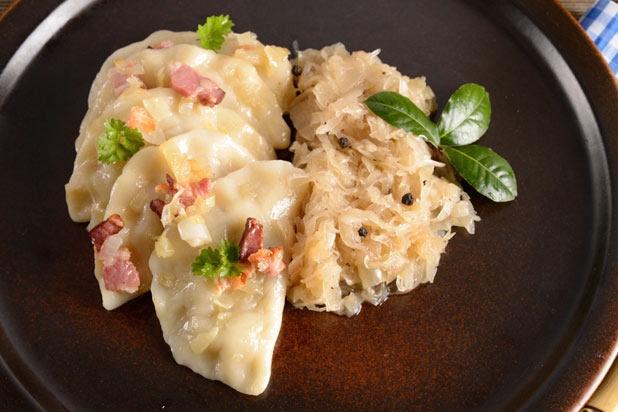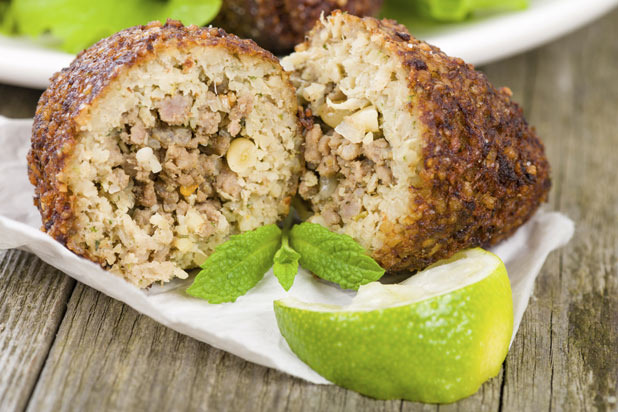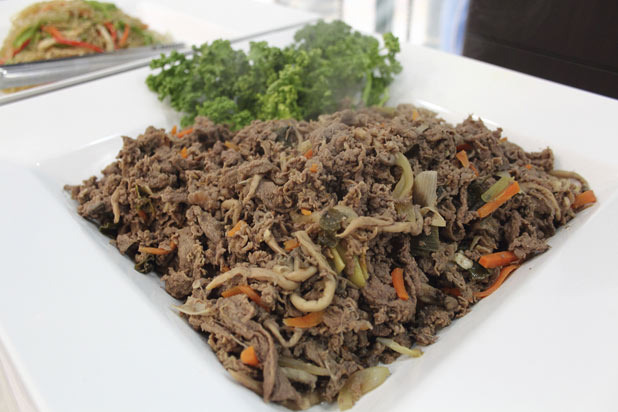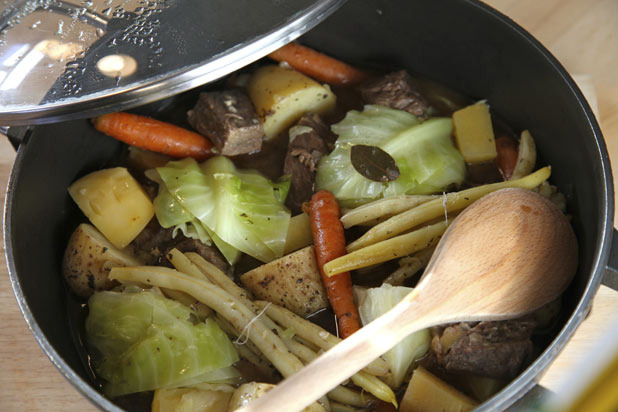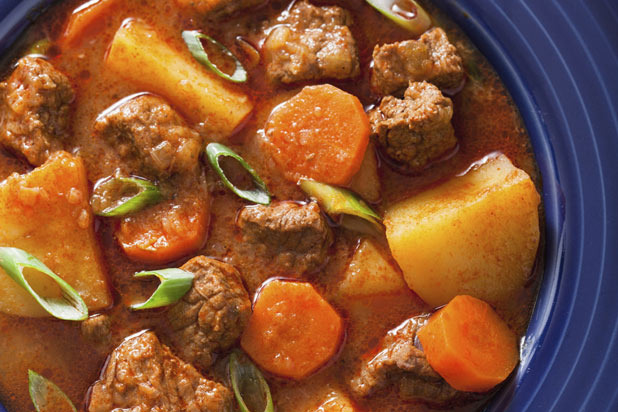10 National Dishes Around The World (Slideshow)
Also sometimes called Filipino Spring Rolls (and the smaller meatier ones are called Lumpiang Shanghai), these are usually made of ground meat, minced onions, finely chopped carrots, and seasoning all rolled up in a paper thin wrapper made with flour and water. It is sealed at the end either by using a sticky beaten egg or plain water.
Argentina — Churrasco con Chimichurri
This Argentine favorite is a grilled flank steak with a tangy herb sauce that is traditionally made with the grass-fed beef and cooked over a wood fire on a grill grate called a parilla or a cast-iron skillet called achapa. At home, you could use a charcoal or gas grill, a broiler, or even a cast-iron grill pan. If you're using a grill and want to add extra smoke flavor, toss a handful of soaked wood chips over the coals before cooking.
South Africa — Bobotie
This Cape Malay favorite is mixture of minced meats baked in an egg-based topping and served with rice and spicy chutney. It likely originated in Indonesia and is similar to a dish called "bobotok." Today it's enjoyed by people all over the country, though especially by communities in the Cape Peninsula.
Greece — Moussaka
Until the early 20th century, moussaka was a simple dish comprising of little more than vegetables and a little meat. Then Greek chef Nikos Tselementes (who trained in France) began adding a béchamel sauce and the dish was forever changed to the national favorite we know today. While some versions can still get involved, the basic dish is a layered oven casserole dish made with vegetables and meat, layers of eggplant slices, cheese, and a meat sauce, topped with a thick béchamel sauce. Other favorite ingredients include potatoes, zucchini, or a combination of vegetables.
Poland — Pierogi
Pierogi are dumplings of unleavened dough which are boiled, stuffed with potato, sauerkraut, ground meat, cheese, or fruit that are then they are baked or fried, usually in butter with onions, and served hot with sour cream and apple sauce. Pierogi (that's the plural, the singular form is actually pieróg) are of Central and Eastern European provenance, they are usually semicircular, but are rectangular or triangular in some cuisines.
Spain — Paella
Paella is Spanish rice dish that originated in the fields of a region called Valencia on the eastern coast of Spain. Today paella is made in every region of Spain, using just about any kind of ingredient that goes well with rice. There are as many versions of paella as there are cooks. It may contain chicken, pork, shellfish, fish, eel, squid, beans, peas, artichokes, or peppers. Saffron, the spice that also turns the rice into a wonderful golden color, is an essential part of the dish.
Lebanon/Syria — Kibbeh
Kibbeh is a popular Levantine dish enjoyed in Syria and Lebanon, is made of bulgur (cracked wheat), minced onions, and lean, finely ground beef, lamb, goat, or camel meat. The best-known variety is a torpedo-shaped fried croquette stuffed with minced beef or lamb. Other types of kibbeh may be shaped into balls or patties, and baked or cooked in broth.
Korea — Bulgogi
Bulgogi is one of the most popular Korean dishes now being enjoyed all across the world. It's thinly sliced meat which has a smoky sweet flavor when broiled or cooked on the grill. It's even delicious stir-fried, and the tender beef can be used in anything from Korean "sushi" rolls (kimbap) to stir-fried noodles (chapchae). Bulgogi is usually accompanied with lettuce wraps and spicy red pepper paste (kochujang) for wrapping and spicing up the meat.
France — Pot-au-Feu
According to the James Beard Foundation this classic French dish, translated as "pot on the fire," is actually two dishes in one. It consists of a hearty beef broth as well as the meats and vegetables that are braised in it. Although the ingredients change slightly from home to home and province to province in France, the method remains the same. If you have meat left over, serve it the next day with some crisp home-fried potatoes.
Hungary — Goulash, Hungary
Originating in the historically ethnic Hungarian ethnic region of Central Europe and Scandinavia during the ninth century, goulash (in Hungarian this is "gulyás") is a soup or stew of meat, noodles, and vegetables seasoned with paprika and other spices. The cooked and flavored meat was air- and sun-dried, packed into bags produced from sheep's stomachs, and needs only water to make it into a meal.


